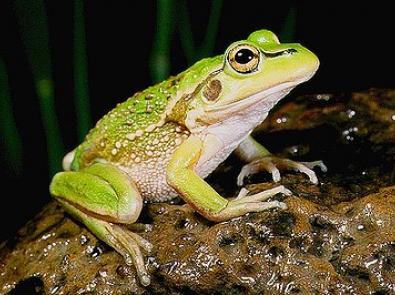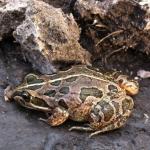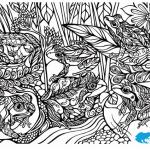In this lesson plan, students will learn about the different species of frogs that live in the distinct ecosystems of Melbourne's waterways, and explore their life strategies to determine how they have evolved to survive in each habitat.
These activities use digital applications such as Melbourne Water’s Frog Census app and Google My Maps to develop students’ ICT skills.
The Frog Census app is a powerful citizen science tool that enables students, their families and the wider community to contribute to understanding the biology and distribution of frog species in Melbourne. This information helps us develop effective policy and management strategies to conserve and enhance these populations.
Download the lesson plan
This lesson plan contains modules explicitly linked to the Victorian Curriculum, as well as meaningful and effective extension activities for frog conservation. To receive free hard copy classroom resources and additional support, email [email protected].
Activities
Activity 1: What is alive?
Students distinguish between living and non-living things. They also discover what makes an animal a vertebrate or an invertebrate, and explore how vertebrates are grouped – focusing
on amphibians (frogs).
Activity 2: A frog’s life
Students explore the fact that every animal has a life cycle, and investigate the life cycle of a frog: from egg, to tadpole, to froglet, to frog. They explore how frogs' life cycle is related to growth and survival.
Activity 3: Know your frog
Students use Melbourne Water's Frog Census app to make predictions about why different life strategies assist frogs' survival, and appreciate the importance of good habitat for their survival. Students research one frog and present their information to the class.
Activity 4: Frog census data mapping
Students practice using the Frog Census app to find frogs with an in-school simulation activity. They plot their findings on a hand-drawn map, then digitally using an app such as Google My Maps.
Activity 5: Conducting a frog census in our local area
In this evening excursion or at-home activity, students and their families have the opportunity to be citizen scientists: collecting meaningful and useful frog call data from local wetlands to support the Frog Census, an initiative managed by Melbourne Water.
Victorian curriculum links
- VCSSU056: Science knowledge helps people to understand the effects of their actions
Science > Science understanding > Science as a human endeavour - VCSSU057: Living things can be grouped on the basis of observable features and can be distinguished from non-living things
Science > Science understanding > Biological sciences - VCSSU058: Different living things have different life cycles and depend on each other and the environment to survive
Science > Science understanding > Biological sciences - VCDTDS019: Explore a range of digital systems with peripheral devices for different purposes, and transmit different types of data
Digital technologies > Digital systems - VCDTDI020: Recognise different types of data and explore how the same data can be represented in different ways
Digital technologies > Data and information
Resources
Frog Census app
Get involved in our community frog monitoring program, and collect data to help us manage frog populations and raise awareness of waterway health issues with our Frog Census app.
Frog activity and colouring sheets
Download frog-themed colouring and activity sheets, and more.


